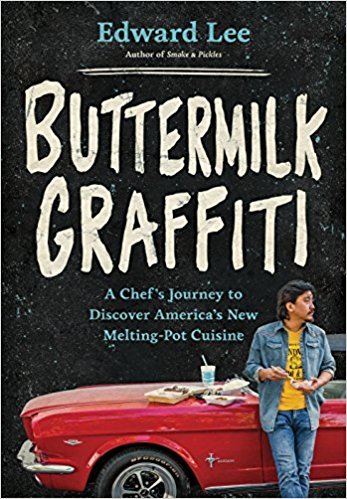What do you think?
Rate this book


304 pages, Hardcover
First published April 17, 2018
"Paula sits with us for just a few minutes. Her parents still come in to make the kibbeh, she says. No one else can make it right. I can feel the restlessness in her bones that only another chef can truly understand."He moves between a narrative and reflective voice, and offers a focus and respect to food creators that has been long overdue.
The plate of food has never been the be-all and end-all for me. Quite the opposite: for me, good food is just the beginning of a trail that leads back to a person whose story is usually worth telling. [Chapter 2: The Pugilist and the Cook, p.32]
~ ~ ~
[A] strength rises out of the cracks in the sidewalks of these immigrant neighborhoods [...] [It] is vibrant, with the din of a hundred languages and aromas of myriad spices. [Chapter 12: Immortality of Paterson, p214]
CHANTERELLE HUMMUS In the age of culinary appropriation, there is a raging debate among chefs and food writers about what you can and cant' call hummus. For the most part, I tend to side with the purists. Black bean hummus isn't hummus (it's just gross). But I do call this a hummus because the chanterelles remind me of chickpeas in flavor and color. [Chapter 4: The Accidental Fast, p.83]
It is because of [Ronni Lundy] that I don't put sugar in my cornbread. [Chapter 6]
~ ~ ~
Janice takes a fork and pierces the meat. It is good, she tells me. She makes me a plate and tells me to sit down [...] She tells me I have to eat it with cornbread. She makes a quick batter and spoons it onto a skillet. She calls it cornbread, but it it more of a corn pancake. It is light and fluffy, but with a gritty texture that tells you this is homemade food. It comes out hot and steaming. She tops it with a little pat of butter, and it immediately melts into a pool of gold that seeps into the corn cake.
[...]
[Shirley Mae] makes her hot water cornbread to order, and it can take twenty minutes sometimes. She boils water in a small pot. In a bowl, she spoons out cornmeal with a little bit of sugar. She slowly drizzles the hot water into the cornmeal and works the wet meal with her hands until she gets a dough that feels right. Then she breaks it into small nuggets and fries each one in a cast-iron skillet with a deep pool of hot oil. [Chapter 16]
~ ~ ~
[R]ecipes can be an incredibly personal expression. A simple conversation about the origin of a recipe can lead to an entire afternoon talking about one's childhood in Tennessee. There is nothing terribly difficult about making cornbread, either. I could give you Shirley Mae's recipe in one paragraph. But you'd be missing the point. In fact, I'm not giving you Shirley Mae's or Janice's recipes—partly because they don't translate easily into words. Each of them cooks from memory, and neither can stand following recipes. They would think it silly for me to even try to figure out the measurements. But don't despair. You should try to figure out your own recipe. You've come this far with me, and I hope by now you understand that the best cooking is not about perfection, but rather the flawed process of how we aim for a desired flavor.
If you want to make cornbread, all you need is cornmeal, salt, a pinch of sugar, and some butter. You can use hot water, milk, or even a little oil if you want. Don't put eggs in it, though. And don't add too much refined flour. Mess around with the proportions, and you'll come up with a mixture you like. That's how I make cornbread at home. It comes out a little different each time, but that's the fun of it. [Chapter 16: A Tale of Two Cornbreads, p.305-306]
~ ~ ~
You will quickly notice that the recipes in this book are not accompanied by photos. This was done on purpose. I want you, the reader, to trust your instincts and cook the way I know you are capable of. Having a recipe published with an accompanying photo is a pretty modern invention. We have been following recipes without photos for centuries. When we don't know what the end result is supposed ot look like, the imagination is allowed to roam free and we come up with our own conclusions. Pictures are excellent guides, and can give you a goal to aspire to, but they can also have a negative effect. If you make a dish and it doesn't look exactly like the photo, you might feel a sense of failure. I don't want that. [Chapter 1: Introduction, 'A Note About the Recipes', p.8]